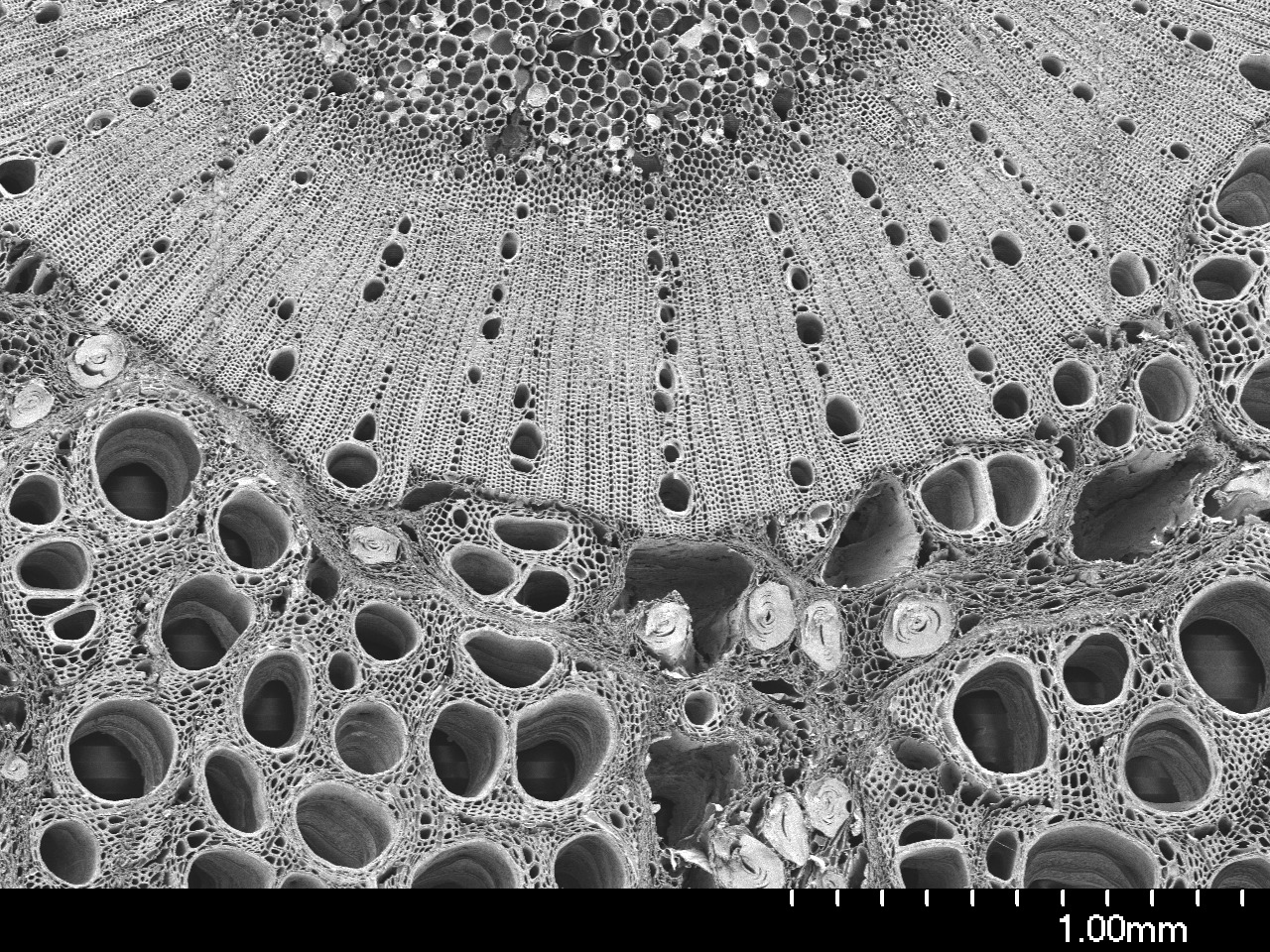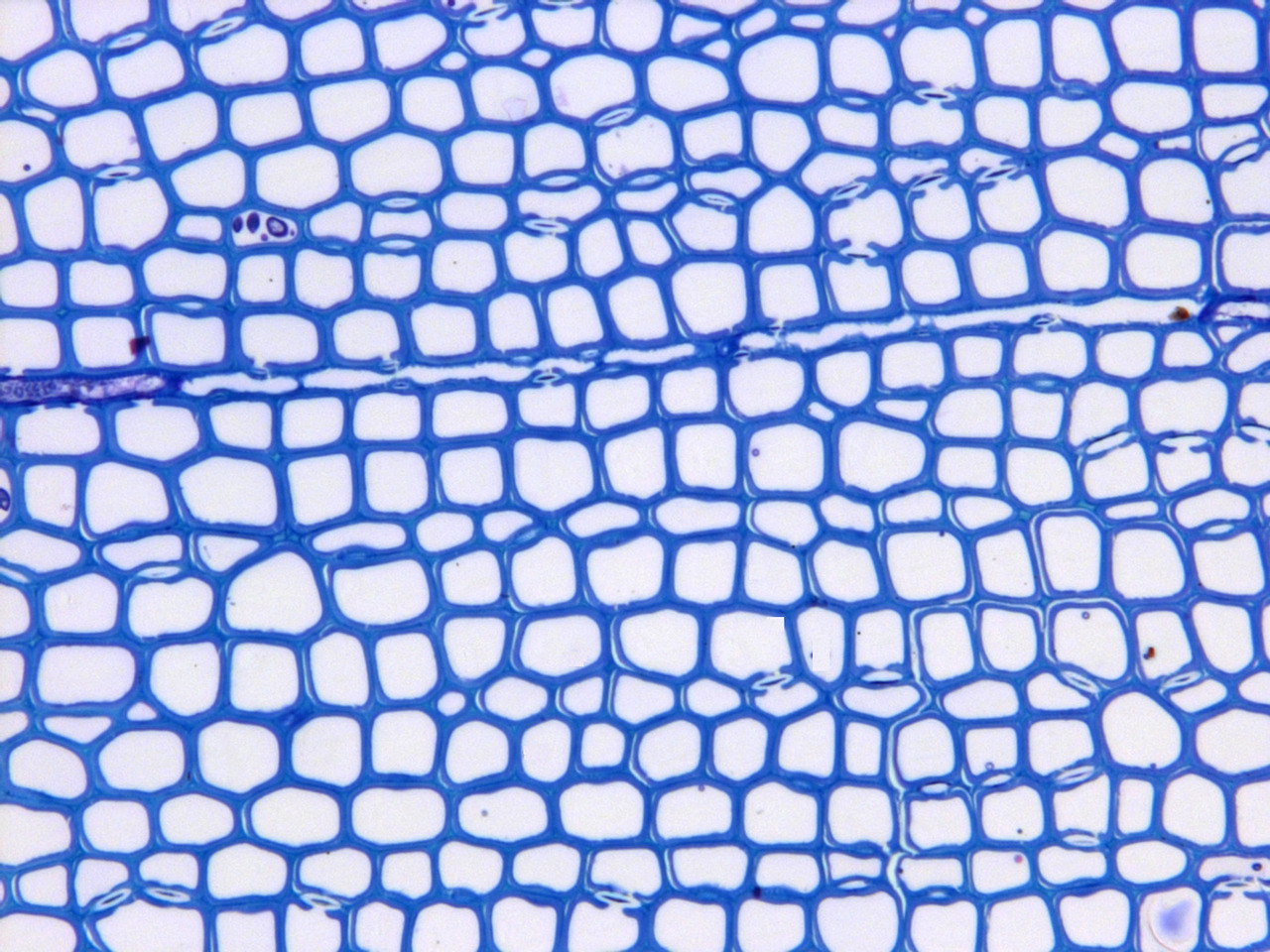Research activities
My research focuses on functional plant morphology, especially with respect to plant water relations. We aim to address the longstanding question of how plants, and especially trees, are able to transport water under negative pressure during periods of transpiration, without constant disruption by large bubbles, while a positive pressure may develop at night. Since water transport is associated with gas movement, we also explore gas dynamics inside plants. Moreover, biomimetic applications such as evaporation-driven transport devices are studied to improve our understanding of water transport under negative pressure.
Our research topics have implications for water conservation and irrigation, plant productivity and growth, drought-induced tree mortality, responses to climate change, and growth resilience at the whole-plant level. Methods applied include microscopy, field and lab measurements, as well as chemical analyses and modelling.
Finally, we equip trees with various sensors to automatically monitor growth-related traits over long time periods. As the application of sensors offers various possibilities to monitor “talking trees” and “talking forests”, we aim to combine fundamental research with science communication activities and public engagement.


Current and recently completed projects
• Ulm4CleverCity, BMI Bundesministerium des Inneren, für Bau und Heimat. Sprechende Bäume - Talking Trees - in Ulm zur Sensibilisierung der Öffentlichkeit für Pflanzen im Klimawandel. 2022-2026.
• DFG Individual Research Grant: “Integrating physiology, modelling, and anatomy to understand xylem embolism spreading in angiosperm plants based on gas diffusion kinetics”. August 2021 – 31/12/2024.
• Carl Zeiss Stiftung: Mechanism of plant water transport and talking trees. Meet & Work application with Dr H. Jochen Schenk. August 2023- February 2024.
Selection of previous projects
• DFG Individual Research Grant – NSFC (National Natural Science Foundation of China): “The effects of seasonality on xylem hydraulic failure in woody angiosperms from temperate to tropical biomes”. December 2019 – December 2022.
• DFG individual research grant (JA 2174/5-1): “Surfactants may shed novel light on water transport in plants under negative pressure”. 1 September 2018 - 31 August 2021.
• National Science Foundation: “Apoplastic lipids in xylem of vascular plants: Composition, locations, origins, and possible functions”. Join application with Prof. Dr. Jochen Schenk (PI); April 2018 –April 2021.
• Baden-Württemberg Ministerium für Wissenschaft, Forschung und Kunst: „Wassertransport in Pflanzen als Vorbild für bionische Transportsysteme bei Unterdruck“. 1 October 2018 – 30 June 2019.
• DFG Individual Research Grant: “Evolutionary and functional traits of parenchyma in the hydraulic architecture of plants”. 1 April 2013 – 31.12.2016.
• Ministry for Science, Research, and the Arts, Baden-Wurttemberg, Germany, Juniorprofessoren-Programm: “Aluminium uptake in Symplocos trees and sustainable use of dye plants by Indonesian weavers”. January 2013 - September 2016.
